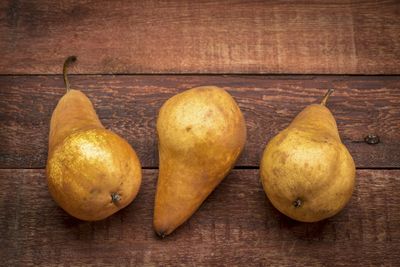What is a Winter Pear?
Sweet juicy pears are one of the few fruits that do not ripen on the tree. Since they ripen from the inside out, by the time they reach perfect readiness on the tree, as judged by the eye, the centers would be mushy. For this reason, winter pears are picked when hard and green, stored in a cool location, and then placed in a warmer place to finish ripening. Winter pears are so named because of when they are marketed, although they are ready for harvest a month or more after other varieties. Pears are members of the rose family and probably originate from Eurasia. Winter pears are ready for harvesting in fall. They are then stored in refrigerators for three to four weeks at 32 to 40 degrees F. (0-4 C.) to allow the fruit to convert starches to sugars. The variety was a favorite with aristocratic French who developed several of the most popular kinds of winter pear. Bosc, D’Anjou, and Comice are all French varieties still grown today. Add in the following and you have the most popular winter pear varieties commercially grown:
Forelle Concorde Seckel Orcas Rescue Flemish Beauty Conference Duchess Dana’s Hovey
Growing Winter Pears
Pear trees are grafted onto rootstock that conveys certain traits such as disease resistance, cold tolerance, and even size. Pear trees prefer temperate regions in full sun with average, well-draining soil. Trees will benefit from judicious pruning in late winter to spring for the first few years to develop a healthy vase-like shape and strong scaffold branches to hold heavy yields. Young trees should be trained to a thick stake initially to keep the central leader straight and true. Fertilize trees in early spring and prune out dead or diseased wood as needed. Growing winter pears is not for the impatient. It can take 20 years or more from planting for your first crops but, boy, is it worth it.
